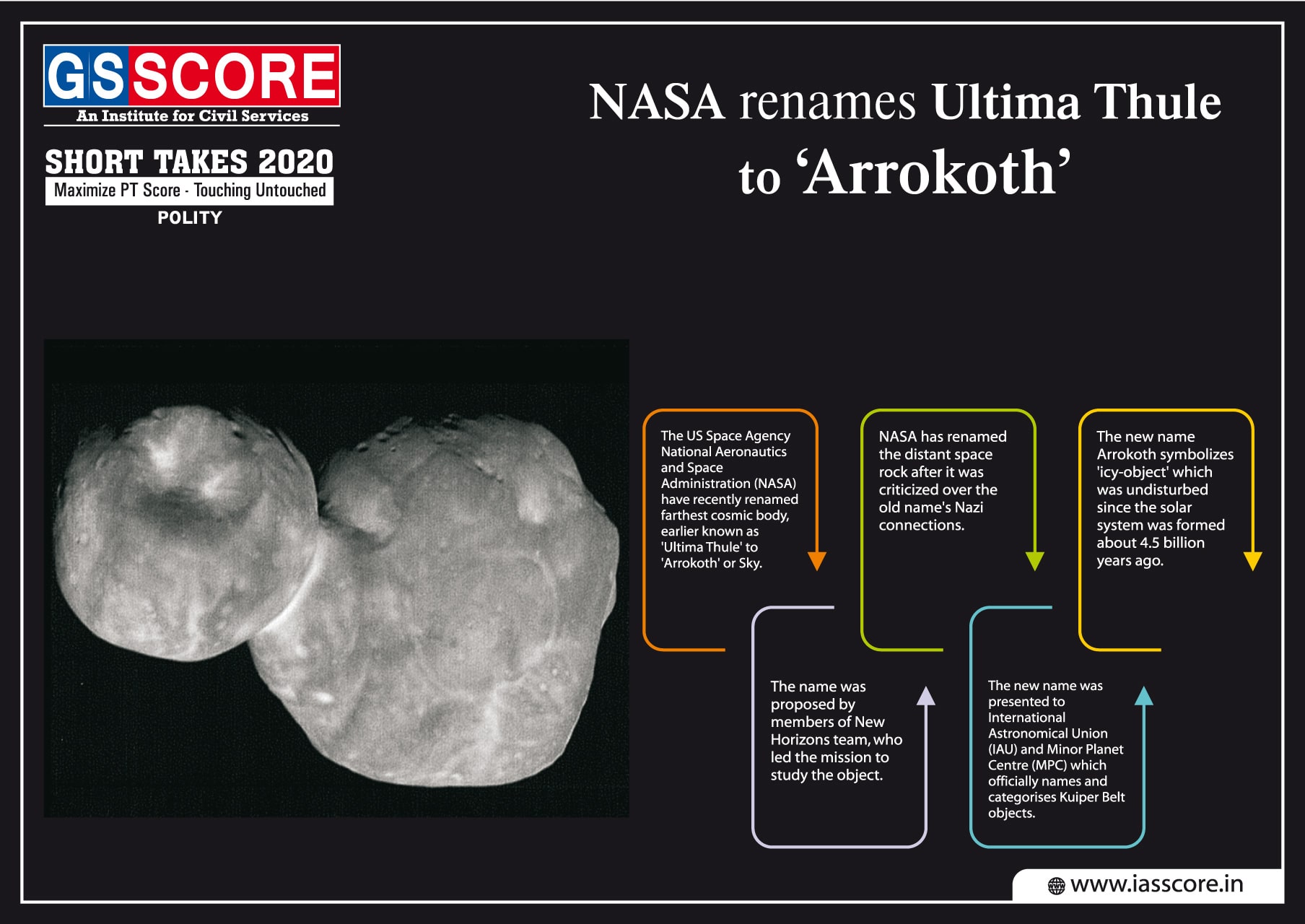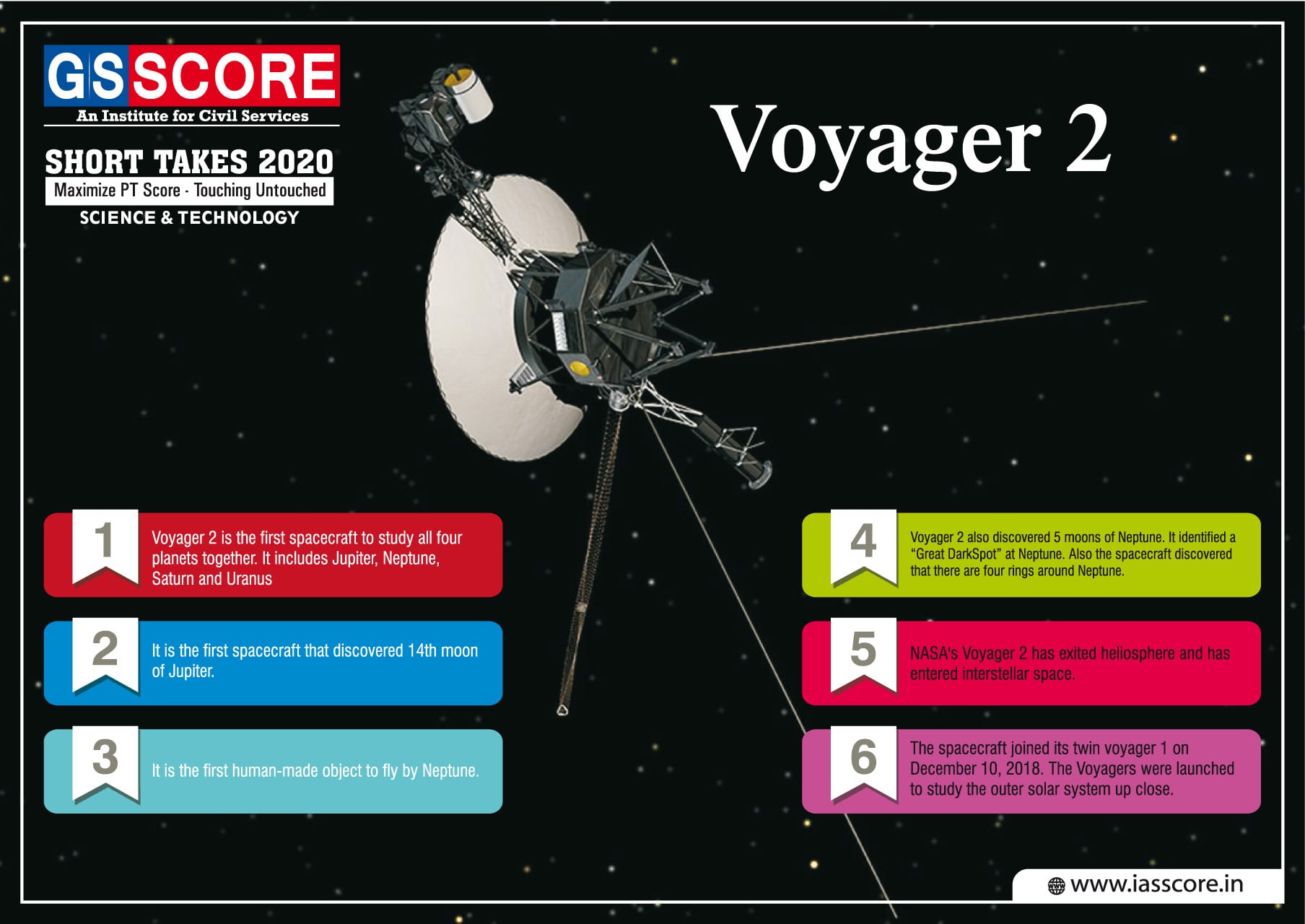Environment & Ecology: International Organization
International Organization
- There are various international environmental organizations which are striving hard to address problems such as habitat destruction, poaching, pollution, and global warming.
- Environmental organizations operate around the world in an effort to analyze, track, and conserve the global environment.
- These organizations may be nonprofits, governmental, trusts, or non-governmental.
- Additionally, environmental organizations work at different levels around the world, including international, national, regional, or local.
- International Geosphere-Biosphere Programme (IGBP)
- IGBP was launched in 1987 to coordinate international research on global-scale and regional-scale interactions between Earth’s biological, chemical and physical processes and their interactions with human systems. The vision has three key elements:
- The planet
- The planet under pressure
- Transformation in an era of rapid global change
IGBP is a world-class provider of:
- Earth system expertise
- Communication
- Coordination
- IGBP research is organised around six projects representing the Earth system - land, atmosphere, ocean and where they meet (land-atmosphere, land-ocean. atmosphere-ocean) and two further projects looking at the Earth system as a whole: Past Global Changes (PAGES) which looks at palaeoclimate, and the Analysis, Integration and Modelling of the Earth System (AIMES), which helps set the agenda for Earth system models. Plus four joint projects - carbon, water, human health and food security - with the other three international global-change programmes.
- World Nature Organization
- Planning for the World Nature Organization began in 2010 by the developing countries which are most threatened by climate change.
- These nations are located around the Pacific Ocean and the Caribbean as well as a few countries in Africa.
- The Preparatory Commission published the WNO Treaty in June of 2012, but lack of interest left the agreement unsigned.
- This organization did not come into effect in May of 2014 as planned. Its goal was to promote economically friendly businesses, technology, energy, and activities.
- Forest Carbon Partnership Facility (FCPF)
It is a global partnership of governments, businesses, civil society, and Indigenous Peoples focused on reducing emissions from deforestation and forest degradation, forest carbon stock conservation, the sustainable management of forests, and the enhancement of forest carbon stocks in developing countries (activities commonly referred to as REDD+).
The four strategic objectives of the FCPF:
- To assist countries in their REDD+ efforts by providing them with ?nancial and technical assistance in building their capacity to bene?t from possible future systems of positive incentives for REDD+.
- To pilot a performance-based payment system for REDD+ activities, with a view to ensuring equitable bene?t sharing and promoting future large-scale positive incentives for REDD+.
- Within the approach to REDD+, to test ways to sustain or enhance livelihoods of local communities and to conserve biodiversity.
- To disseminate broadly the knowledge gained in the development of the Facility and the implementation of Readiness Preparation Proposals (RPPs) and Emission Reductions Programs (ERPs).
The FCPF’s funding mechanisms:
The FCPF has two separate but complementary funding mechanisms — the Readiness Fund and the Carbon Fund — to achieve its strategic objectives. Both funds are underpinned by a multi-donor fund of governments and non-governmental entities, including private companies that make a minimum ?nancial contribution of $5 million.
- Contributors to the Readiness Fund are known as Donor Participants.
- Contributors to the Carbon Fund are known as Carbon Fund Participants.
- Developing countries participating in the FCPF (both funds) are known as REDD Country Participants
Governance
- The FCPF currently has 47 REDD Country Participants (18 in Africa, 18 in Latin America and the Caribbean, and 11 in Asia-Paci?c).
- The World Bank assumes the functions of trustee and secretariat. The World Bank, the Inter-American Development Bank and United Nations Development Programme are Delivery Partners under the Readiness Fund and responsible for providing REDD+ readiness support services to distinct countries.
- United Nations Environment Programme (UNEP)
- The United Nations Environment Programme (UNEP) is the leading global environmental authority that sets the global environmental agenda, promotes the coherent implementation of the environmental dimension of sustainable development within the United Nations system, and serves as an authoritative advocate for the global environment.
- Mission is to provide leadership and encourage partnership in caring for the environment by inspiring, informing, and enabling nations and peoples to improve their quality of life without compromising that of future generations.
- UNEP categorize work into seven broad thematic areas:
-
- climate change,
- disasters and conflicts,
- ecosystem management,
- environmental governance,
- chemicals and waste,
- resource efficiency, and
- Environment under review.
- Every year, they honour and celebrate individuals and institutions that are doing outstanding work on behalf of the environment.
- The Partnership for Action on Green Economy (PAGE)
- It was launched in 2013 as a response to the call at Rio+20 to support those countries wishing to embark on greener and more inclusive growth trajectories.
- PAGE seeks to put sustainability at the heart of economic policies and practices to advance the 2030 Agenda for Sustainable Development and supports nations and regions in reframing economic policies and practices around sustainability to foster economic growth, create income and jobs, reduce poverty and inequality, and strengthen the ecological foundations of their economies.
- PAGE brings together ?ve UN agencies – UN Environment, International Labour Organization, UN Development Programme, UN Industrial Development Organization, and UN Institute for Training and Research – whose mandates, expertises and networks combined can offer integrated and holistic support to countries on inclusive green economy, ensuring coherence and avoiding duplication.
- PAGE represents a mechanism to coordinate UN action on green economy and to assist countries in achieving and monitoring the emerging Sustainable Development Goals, especially SDG 8: “Promote sustained, inclusive and sustainable economic growth, full and productive employment and decent work for all.”
- Climate Action Network
- The Climate Action Network (CAN) is a worldwide network of over 1300 Non-Governmental Organizations (NGOs) in more than 120 countries, working to promote government and individual action to limit human-induced climate change to ecologically sustainable levels.
- CAN members work to achieve this goal through information exchange and the coordinated development of NGO strategy on international, regional, and national climate issues. CAN have regional network hubs that coordinate these efforts around the world.
- CAN members place a high priority on both a healthy environment and development that "meets the needs of the present without compromising the ability of future generations to meet their own needs" (Brundtland Commission). CAN's vision is to protect the atmosphere while allowing for sustainable and equitable development worldwide.
- Global Alliance for Climate Smart Agriculture (GACSA)
- GACSA is an inclusive, voluntary and action-oriented multi-stakeholder platform on Climate-Smart Agriculture (CSA).
- Its vision is to improve food security, nutrition and resilience in the face of climate change.
- GACSA aims to catalyze and help create transformational partnerships to encourage actions that re?ect an integrated approach to the three pillars of CSA.
- GACSA works towards three aspirational outcomes to:
- Improve farmers’ agricultural productivity and incomes in a sustainable way;
- Build farmers’ resilience to extreme weather and changing climate;
- Reduce greenhouse gas emissions associated with agriculture, when possible.
Members:
- GACSA is a voluntary platform open to governments, international and regional organizations, institutions, civil society, farmers’ organizations and businesses who agree with its vision and it’s Framework Document.
- Being a member does not create any binding obligations and members determine their particular voluntary actions according to their needs and priorities.
- Individuals cannot be members, but they can join GACSA’s Action Groups
- The Intergovernmental Panel on Climate Change (IPCC)
- Created in 1988 by the World Meteorological Organization (WMO) and the United Nations Environment Programme (UNEP), the objective of the IPCC is to provide governments at all levels with scientific information that they can use to develop climate policies.
- IPCC reports are also a key input into international climate change negotiations.
- The IPCC is an organization of governments that are members of the United Nations or WMO. The IPCC currently has 195 members. Thousands of people from all over the world contribute to the work of the IPCC. For the assessment reports, IPCC scientists volunteer their time to assess the thousands of scientific papers published each year to provide a comprehensive summary of what is known about the drivers of climate change, its impacts and future risks, and how adaptation and mitigation can reduce those risks.
- An open and transparent review by experts and governments around the world is an essential part of the IPCC process, to ensure an objective and complete assessment and to reflect a diverse range of views and expertise.
- Through its assessments, the IPCC identifies the strength of scientific agreement in different areas and indicates where further research is needed. The IPCC does not conduct its own research.
- United Nations Framework Convention on Climate Change (UNFCCC).
- The UNFCCC secretariat (UN Climate Change) was established in 1992 when countries adopted the United Nations Framework Convention on Climate Change (UNFCCC).
- With the subsequent adoption of the Kyoto Protocol in 1997 and the Paris Agreement in 2015, Parties to these three agreements have progressively reaffirmed the secretariat’s role as the United Nations entity tasked with supporting the global response to the threat of climate change.
- Since 1995, the secretariat is located in Bonn, Germany.
What does the secretariat do?
- Focussing in its early years largely on facilitating the intergovernmental climate change negotiations, the secretariat today supports a complex architecture of bodies that serve to advance the implementation of the Convention, the Kyoto Protocol and the Paris Agreement.
- The secretariat provides technical expertise and assists in the analysis and review of climate change information reported by Parties and in the implementation of the Kyoto mechanisms.
- It also maintains the registry for Nationally Determined Contributions (NDC) established under the Paris Agreement, a key aspect of implementation of the Paris Agreement.
- The secretariat organizes and supports between two and four negotiating sessions each year.
- The largest and most important is the Conference of the Parties, held annually and hosted in different locations around the globe.
- It is the largest annual United Nations conference, attended on average by around 25,000 participants.
- In addition to these major conferences, the secretariat organizes annual sessions of the so-called subsidiary bodies as well as a large number of meetings and workshops throughout the year.
- In recent years, the secretariat also supports the Marrakech Partnership for Global Climate Action, agreed by governments to signal that successful climate action requires strong support from a wide range of actors, including regions, cities, business, investors and all parts of civil society.
- At UN Climate Change Conferences, a large number of events demonstrate how non-Party stakeholders are working with governments and the UN system to implement the Paris Agreement.
- Throughout the year, the secretariat strives to keep all stakeholders informed of on the negotiating process and climate action through a variety of communications products, including social media.
- The International Union for Conservation of Nature
- IUCN is a membership Union composed of both government and civil society organisations.
- It harnesses the experience, resources and reach of its more than 1,300 Member organisations and the input of more than 15,000 experts.
- This diversity and vast expertise makes IUCN the global authority on the status of the natural world and the measures needed to safeguard it.
- Over the past decades, IUCN has widened its focus beyond conservation ecology and now incorporates issues related to sustainable development in its projects.
- IUCN does not itself aim to mobilize the public in support of nature conservation.
- It tries to influence the actions of governments, business and other stakeholders by providing information and advice, and through building partnerships.
- The organization is best known to the wider public for compiling and publishing the IUCN Red List of Threatened Species, which assesses the conservation status of species worldwide.
- Its headquarters are in Gland, Switzerland.
- Global Climate Change Alliance (GCCA)
- The GCCA was established by the European Union (EU) in 2007 to strengthen dialogue and cooperation with developing countries, in particular least developed countries (LDCs) and Small Island developing States (SIDS).
- By fostering effective dialogue and cooperation on climate change, the Alliance helps to ensure that poor developing countries most vulnerable to climate change increase their capacities to adapt to the effects of climate change, in support of the achievement of the Millennium Development Goals (MDGs).
- In 2014, a new phase of the GCCA, the GCCA+ ?agship initiative, began in line with the European Commission’s new Multiannual Financial Framework (2014-2020).
- The GCCA+ aim is to boost the ef?ciency of its response to the needs of vulnerable countries and groups. Using ambitious and innovative approaches, it will achieve its goals by building on its two mutually reinforcing pillars:
- Under the ?rst pillar, the GCCA+ serves as a platform for dialogue and exchange of experience between the EU and developing countries, focusing on climate policy and bringing renewed attention to the issue of international climate ?nance. The results feed into negotiations for a new climate deal under the United Nations Framework Convention on Climate Change (UNFCCC).
- Under the second pillar, the GCCA+ acts as a source of technical and ?nancial support for the world’s most climate-vulnerable countries, whose populations need climate ?nance the most. Extra efforts will be made to strengthen the strategically important issues of ecosystems-based adaptation, migration and gender equality.
- The GCCA+ focuses its technical support on three priority areas:
- Climate change mainstreaming and poverty reduction
- Increasing resilience to climate-related stresses and shocks
- Sector-based climate change adaptation and mitigation strategies
- Green Climate Fund
- The Green Climate Fund (GCF) is the world’s largest dedicated fund helping developing countries reduce their greenhouse gas emissions and enhance their ability to respond to climate change.
- It was set up by the United Nations Framework Convention on Climate Change (UNFCCC) in 2010.
- GCF has a crucial role in serving the Paris Agreement, supporting the goal of keeping average global temperature rise well below 2 degrees C.
- It does this by channeling climate finance to developing countries, which have joined other nations in committing to climate action.
- Responding to the climate challenge requires collective action from all countries, including by both public and private sectors. Among these concerted efforts, advanced economies have agreed to jointly mobilize significant financial resources.
- Coming from a variety of sources, these resources address the pressing mitigation and adaptation needs of developing countries.
- GCF launched its initial resource mobilisation in 2014, and rapidly gathered pledges worth USD 10.3 billion. These funds come mainly from developed countries, but also from some developing countries, regions, and one city.
- GCF’s activities are aligned with the priorities of developing countries through the principle of country ownership, and the Fund has established a direct access modality so that national and sub-national organisations can receive funding directly, rather than only via international intermediaries.
- The Fund pays particular attention to the needs of societies that are highly vulnerable to the effects of climate change, in particular Least Developed Countries (LDCs), Small Island Developing States (SIDS), and African States.
- GCF aims to catalyze a flow of climate finance to invest in low-emission and climate-resilient development, driving a paradigm shift in the global response to climate change.
- World Wide Fund for Nature
- The World Wide Fund for Nature (WWF) is an international non-governmental organization founded in 1961, working in the field of wilderness preservation, and the reduction of human impact on the environment.
- It was formerly named the World Wildlife Fund, which remains its official name in Canada and the United States.
- WWF is the world's largest conservation organization with over five million supporters worldwide, working in more than 100 countries, supporting around 3000 conservation and environmental projects.
- They have invested over $1 billion in more than 12,000 conservation initiatives since 1995.
- WWF is a foundation with 55% of funding from individuals and bequests, 19% from government sources (such as the World Bank, DFID, USAID) and 8% from corporations in 2014.
- WWF aims to "stop the degradation of the planet's natural environment and to build a future in which humans live in harmony with nature."
- The Living Planet Report has been published every two years by WWF since 1998; it is based on a Living Planet Index and ecological footprint calculation.
- In addition, WWF has launched several notable worldwide campaigns including Earth Hour and Debt-for-Nature Swap, and its current work is organized around these six areas: food, climate, freshwater, wildlife, forests, and oceans.
- Global Environment Facility
- The Global Environment Facility (GEF) was established on the eve of the 1992 Rio Earth Summit to help tackle our planet’s most pressing environmental problems. Since then, the GEF has provided close to $20 billion in grants and mobilized an additional $107 billion in co-financing for more than 4,700 projects in 170 countries. Through its Small Grants Programme, the GEF has provided support to nearly 24,000 civil society and community initiatives in 128 countries.
- The GEF Partnership recently agreed to a new direction in its work to achieve greater results and helps to meet rising challenges. This agreement is set out in the Summary of the Negotiations of the Seventh Replenishment of the GEF. In combination with its traditional investments under the Conventions, the GEF is:
- Strategically focusing its investments to catalyze transformational change in key systems that are driving major environmental loss, in particular energy, cities and food;
- Prioritizing integrated projects and programs that address more than one global environmental problem at a time, building on the GEF's unique position and mandate to act on a wide range of global environmental issues; and
- Implementing new strategies and policies to enhance results, including stronger engagement with the private sector, indigenous peoples, and civil society, and an increased focus on gender equality.
Waste-to-Energy
Context
DMRC becomes India’s 1st project to receive Power from Waste-to-Energy.
About
More on news:
- Delhi Metro has started receiving 2 MW power from a 12 MW capacity waste-to-energy plant set up in Ghazipur and the plant will mitigate over 8 million tons of Greenhouse Gases (GHG) over the life of the project.
- DMRC will take approximately 17.5 million units per annum from this plant, however, the energy off-take will depend upon the actual generation of the plant.
- The waste-to-energy plant set up by East Delhi Waste Processing Company Limited (EDWPCL) is based on a Public Private Partnership (PPP) involving the Delhi government and East Delhi Municipal Corporation (EDMC), besides the EDWPCL.
- The plant is India's first Euro norms compliant waste-to-energy facility and the state of the art facility is set up to process above 1,500 tonnes per day (TPD) of waste and generate 12 MW of green power.
- The Delhi Metro has been working continuously towards the conservation of the environment since the inception of the organization and is the first ever rail based organisation in the world to claim carbon credits.
- The DMRC has also commissioned a facility at Rohini (Delhi) on PPP model with IL&FS Environmental Infrastructure & Services Ltd (IEISL) for recycling of Construction and Demolition (C&D) waste with a capacity of 150 tons per day.
- Currently, DMRC is producing 28 MW of solar power from the various rooftop solar power plants, which have been set up in its stations, depots and residential premises.
- The mass transit operator has also started to receive solar power from the off-site solar power plant at Rewa in Madhya Pradesh.
- In construction also, DMRC plants 10 trees for each tree that is cut. Close to 4 lakh vehicles are being removed from the streets because of the Delhi Metro.
Waste-to-Energy
- Waste-to-Energy (WtE) or Energy-from-Waste (EfW) is a form of energy recovery and the process of generating energy in the form of electricity and/or heat from the primary treatment of waste, or the processing of waste into a fuel source.
- Most WtE processes generate electricity and/or heat directly through combustion, or produce a combustible fuel commodity, such as methane, methanol, ethanol or synthetic fuels.
- Incineration, the combustion of organic material such as waste with energy recovery, is the most common WtE implementation method.
- All new WtE plants in OECD countries incinerating waste (residual MSW, commercial, industrial or RDF) must meet strict emission standards, including those on nitrogen oxides (NOx), sulphur dioxide (SO2), heavy metals and dioxins. Modern incinerators reduce the volume of the original waste by 95-96 percent, depending upon composition and degree of recovery of materials such as metals from the ash for recycling.
- Incinerators may emit fine particulate, heavy metals, trace dioxin and acid gas, even though these emissions are relatively low from modern incinerators. Other concerns include proper management of residues: toxic fly ash, which must be handled in hazardous waste disposal installation as well as incinerator bottom ash (IBA).
Adidas set to tap Indian firm's PET project to cut Virgin Plastic use
Context
- Global sportswear giant Adidas aims at eliminating the use of virgin plastics in its products by 2024 — with a little help from a Maharashtra-based firm — the only one of its kind in the country to produce yarn out of discarded PET bottles.
- Discarded bottles are upcycled to make high-quality polyester filament yarn for Adidas products.
About
More on news:
- At its first factory set up in Nashik five years ago, Polygenta Technology Limited deploys an unique technology to break down used PET (Polyethylene Terephthalate) bottles and convert them into polyester filament yarn.
- The firm, with a capacity to convert 30 tonnes of PET bottles into yarn a day, plans to scale up capacity to around 100 tonnes a day in the next two years to meet demand from the likes of Adidas — one of its first clients.
- Polygenta would be converting around 8 to 10 million bottles a day in a couple of years from now. At present, the company recycle roughly two million bottles a day.
- The yarn produced by Polygenta, currently sent to Adidas’ manufacturing centres to be converted into sportswear, and may also be tapped to potentially upcycle clothes made from polyester yarn.
- According to the United Nations, around 300 million tonnes of plastic are produced every year — roughly the weight of the entire human population. Of this, eight million tonnes of plastic waste ends up in the oceans; PET bottles are the main contributors to plastic waste globally and in India.
- PET material collection rate in India is nearly 80% — among the best in the world — but a good portion of these bottles are downcycled, eliminating the possibility of further recycling. Downcycling is reuse of waste in a manner that the recycled product is of lower value than the original material.
Energy efficient
- The upcycling process consumes 86% less water and 75% less energy than conventional manufacturing, but costs approximately 10% more.
- A key area where costs can be reduced is curbing the level of contamination in PET bottles. If PET bottles are disposed and collected properly, one can expect savings to the tune of ?5 per kg. In Japan individuals dispose PET bottles after removing the caps and the labels.
COP-14 of UNCCD
Key Highlights of COP-14
- Presidency: India will be taking over the COP presidency from China for the next two years until the next COP is hosted in 2021.
- Participants: At least 5,000 delegates from nearly 197 countries will be participating in the event which will be held between rom 29th August to 14th September 2019 at India Expo Mart Limited, Greater Noida.
- Function: One of the primary functions of COP-14 is to review reports submitted by Conference of Parties to convention and detailing how they are carrying out their commitments.
- India’s Land Degradation Problems: India faces a severe problem of land degradation (meaning the soil becoming unfit for cultivation). The Indian Space Research Organisation (ISRO) in its 2016 report found that over 29% of India’s land (in 2011-2013) was degraded which was 0.57% increase from year 2003-2005.
India’s Flagship Project:
- Ahead of COP-14, Prakash Javadekar, Union Minister of Environment, Forest and Climate Change (MoEFCC) has launched a flagship project which is a part of a larger international initiative called ‘Bonn Challenge’.
- It is aimed at enhancing India’s capacity for Forest Landscape Restoration (FLR). During the pilot phase of project (initial 3.5 years), it will be implemented in Haryana, Madhya Pradesh, Maharashtra, Nagaland and Karnataka. Initially, the project will be aimed at developing and adapting best practices and monitoring protocols for country, and building capacity within 5 pilot States. Later, it will eventually be scaled up across the country through subsequent phases of project. The project will be implemented by MoEFCC in partnership with International Union for Conservation of Nature (IUCN).
Bonn Challenge
- It is a global effort towards bringing 150 million hectares of world’s degraded and deforested land under restoration by the year 2020 and 350 million hectares by 2030.
- At COP-13 (2015) in Paris, India also joined the voluntary Bonn Challenge pledge and had committed towards restoring 13 million hectares (MH) of degraded and deforested land by year 2020, and an additional 8 million hectares (MH) by 2030. India’s pledge is one of the largest in Asia.
NASA renames Ultima Thule to ‘Arrokoth’

X-57 “Maxwell”

Voyager 2

Arise

NAVARMS-19




